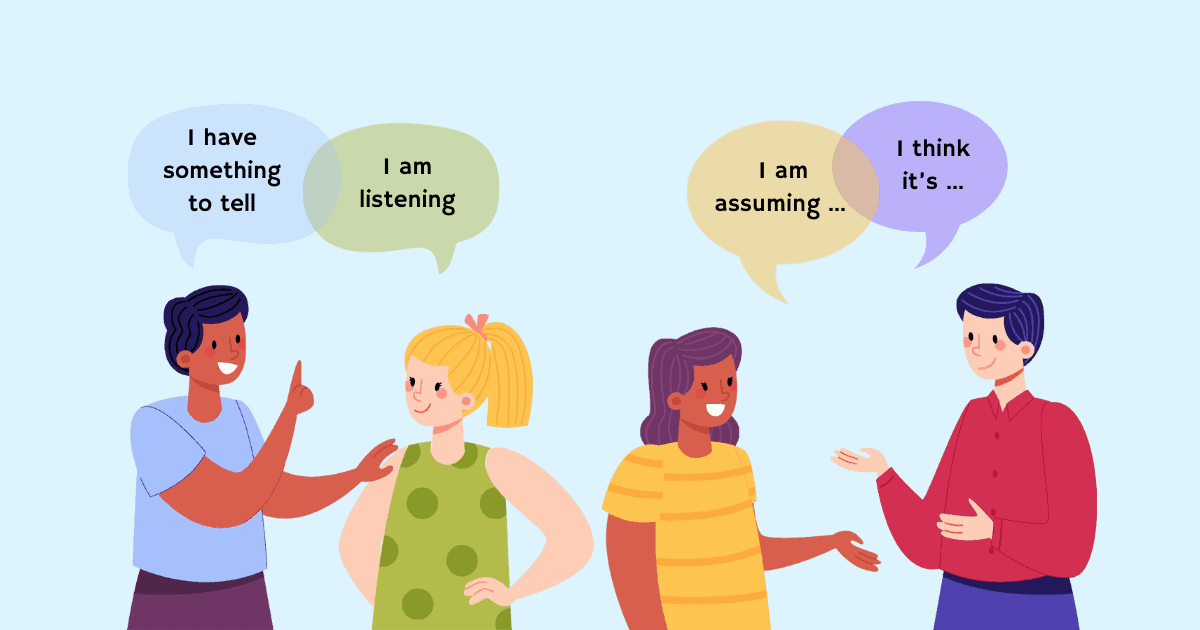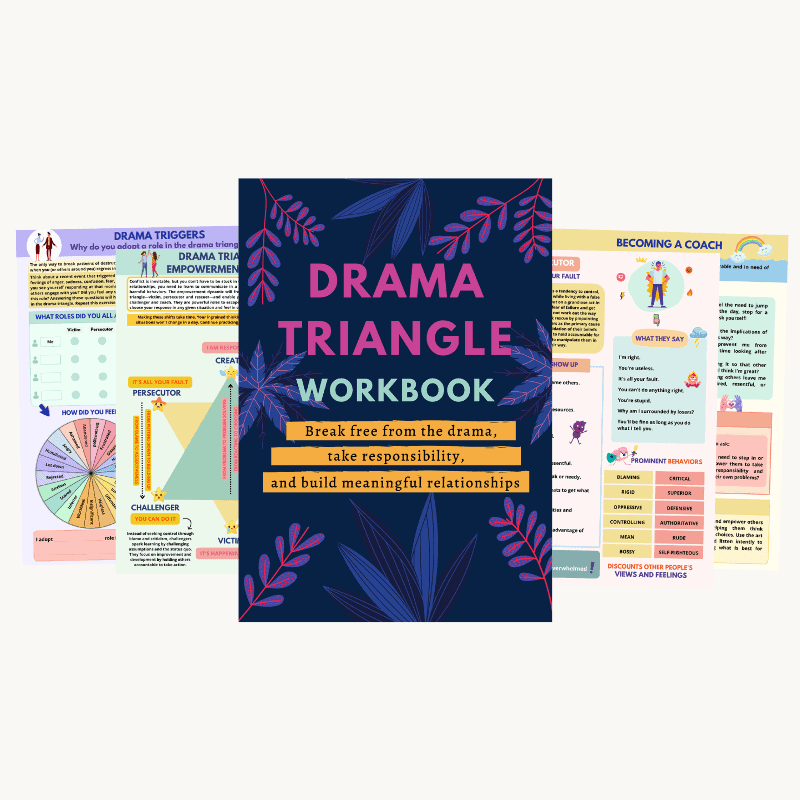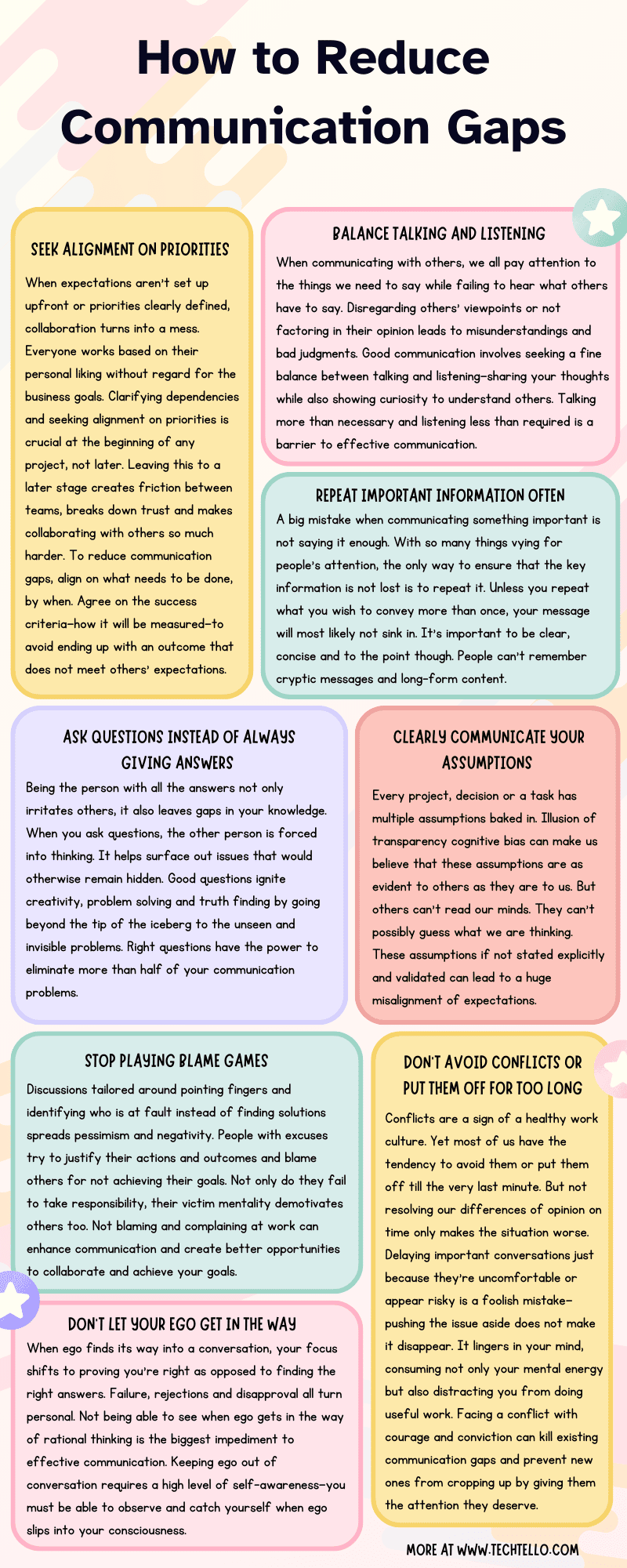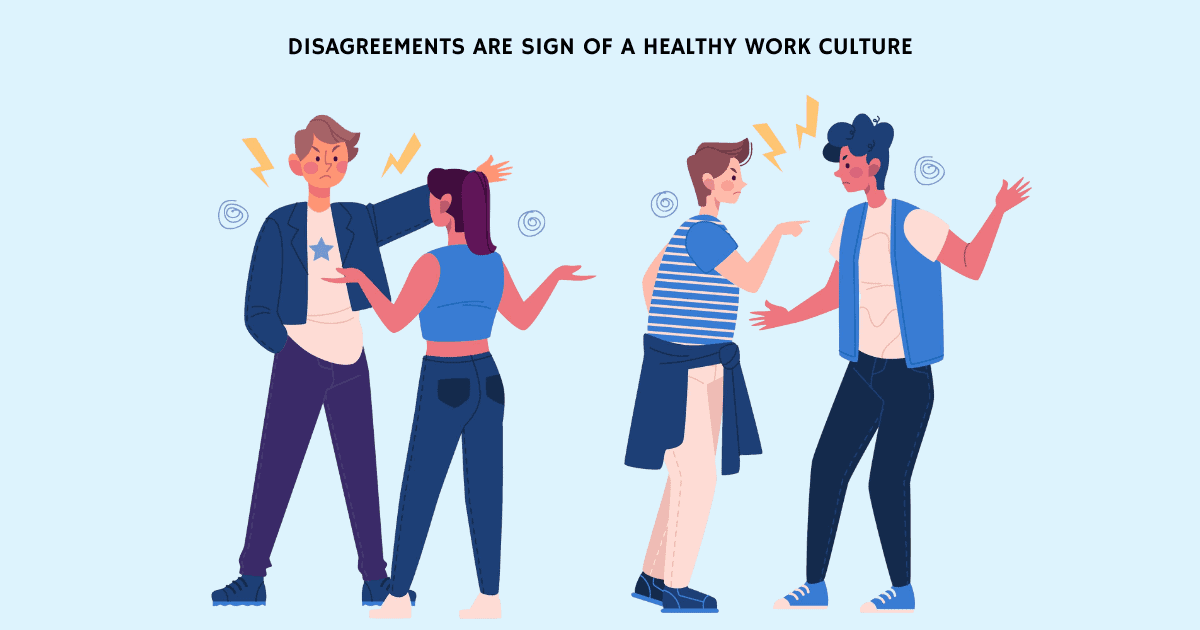How to Reduce Communication Gaps at Work

Communication problems are the source of a lot of misery at work. They lead to expectation mismatch, misalignment, confusion and even friction between people.
When communication breaks down, project deadlines are missed, stakeholders lose trust and business suffers. Poor communication makes it hard to get things done and achieve success.
Communication gaps don’t necessarily happen because we are communicating less. Rather, with so many communication tools at our disposal we are now communicating more than ever.
However, talking more does not translate into effective communication. To communicate well, we need to stop pointing fingers and look internally to our own behaviors and actions.
What communication problems are we facing?
Why are these problems occurring (think root cause)?
What are we doing (or not doing) that’s contributing to these problems?
What can we do to reduce these gaps?
The single biggest problem in communication is the illusion that it has taken place.
— George Bernard Shaw
Learning to converse with others is one of the most important skills at work—we all need to learn and improve upon it. It requires conscious effort to hash things out, embrace uncomfortable conversations and desire to listen and learn from others.
Communication can never be perfect—some things are bound to fall through the cracks. But just because it can’t be perfect doesn’t mean that you shouldn’t even try.
Here are the 8 practices I have used in my career that can make communication less painful and more productive for everyone:
Seek alignment on priorities
When expectations aren’t set up upfront or priorities clearly defined, collaboration turns into a mess. Everyone works based on their personal liking without regard for the business goals.
This definitely hurts those who are dependent on others for their work. Not getting what they need keeps them blocked and stuck without being able to move forward.
Clarifying dependencies and seeking alignment on priorities is crucial at the beginning of any project, not later. Leaving this to a later stage creates friction between teams, breaks down trust and makes collaborating with others so much harder.
To reduce communication gaps:
- Align on what needs to be done, by when.
- Agree on the success criteria—how it will be measured—to avoid ending up with an outcome that does not meet others’ expectations.
- Ensure timelines are committed based on proper effort estimation instead of vague commitment.
- Sync up regularly to factor in unexpected and unknown priorities.
- Realign on a new set of priorities and get down to work.
If you could get all the people in an organization rowing in the same direction, you could dominate any industry, in any market, against any competition, at any time.
— Patrick Lencioni, The Five Dysfunctions of a Team
Getting everyone to row in the same direction can significantly reduce communication challenges at work.
Balance talking and listening
When communicating with others, we all pay attention to the things we need to say while failing to hear what others have to say.
Disregarding others’ viewpoints or not factoring in their opinion leads to misunderstandings, faulty assumptions and bad judgments.
Good communication involves seeking a fine balance between talking and listening—sharing your thoughts while also showing curiosity to understand others.
What are their concerns?
What do they agree on and what do they disagree with?
What are their suggestions?
By committing to keep the conversation two-sided and listening intently to others, you can leave less space for surprises and create more room for finding solutions together.
Being a good talker doesn’t make you a good listener, and being smart might make you a terrible listener.
— Celeste Headlee, We Need to Talk
Talking more than necessary and listening less than required is a barrier to effective communication.
Repeat important information often
A big mistake we make when communicating something important is not saying it enough.
With so many things vying for people’s attention, the only way to ensure that the key information is not lost is to repeat it. The more you repeat something, the more likely they are to remember it. Repetition is key to information recall. Unless you repeat what you wish to convey more than once, your message will most likely not sink in.
It’s simple: if something is important, it deserves attention. The only way to make sure it’s heard is to repeat it. Keep doing it till it’s obvious to everyone. Repetition may irritate a few people, but it’s better to irritate than leave it to chance or open for confusion.
It’s important to be clear, concise and to the point though. People can’t remember cryptic messages and long-form content will most likely be ignored.
The quality of your communication determines the size of your result.
— Meir Ezra
The better you’re able to get your message across, the better your outcome will be.
Ask questions instead of always giving answers
Being the person with all the answers not only irritates others, it also leaves gaps in your knowledge.
When you ask questions, the other person is forced into thinking. It helps surface out issues that would otherwise remain hidden. Good questions ignite creativity, problem solving and truth finding by going beyond the tip of the iceberg to the unseen and invisible problems.
To reduce communication gaps, ask thoughtful questions:
- Use open-ended questions that require others to think instead of answering yes or no.
- Use the five-whys technique to dig deeper.
- Apply the right framing to avoid biased answers. How you frame something determines the response you get.
- Challenge status quo and traditional thinking practices.
- Show curiosity instead of trying to appear superior.
Questioning helps people gain perspective and understand the perspectives of others. As they see issues and problems from different points of view, they gain an appreciation for their complexity—and also expand the range of possible solutions.
— Michael J. Marquardt, Leading with Questions
Right questions have the power to eliminate more than half of your communication problems.
Clearly communicate your assumptions
Every project, decision or a task has multiple assumptions baked in. Illusion of transparency cognitive bias can make us believe that these assumptions are as evident to others as they are to us. But others can’t read our minds. They can’t possibly guess what we are thinking.
Cognitive Distortions Bundle
Challenge and replace irrational thoughts with more realistic and adaptive thoughts.
These assumptions if not stated explicitly and validated can lead to a huge misalignment of expectations. You may end up spending a lot of time on something only to be rejected and disapproved later.
To avoid rework and frustration that comes from not seeking alignment upfront, do this:
- Document key assumptions and observations (instead of keeping them in your head) and get a sign-off from the stakeholders before starting development to reduce gaps in understanding thereby making less avoidable errors.
- Ask others to do the same.
- Review all the assumptions together and ensure everyone is operating from the same set of presumptions.
The best results in life are often held back by false constructs and untested assumptions.
— Tim Ferriss
To reduce communication gaps, seek clarification on your assumptions, don’t work with a false notion of certainty.
Stop playing blame games
Discussions tailored around pointing fingers and identifying who is at fault instead of finding solutions spreads pessimism and negativity.
People with excuses try to justify their actions and outcomes and blame others for not achieving their goals. Not only do they fail to take responsibility, their victim mentality demotivates others too. Those who are blamed are discouraged to contribute—they try to play safe and communicate even less.
Break Free from Drama
This workbook will enable you to recognize and eliminate the drama from your life and shift to empowerment.
The victim mindset produces a delusion of fault and blame that blinds you from the simple truth of cause and effect.
— Steve Maraboli, Unapologetically You
When things don’t go as expected, get rid of all the complaints, whining and drama and instead do this:
- Identify what you did or did not do that contributed to this result.
- Talk to others and get their perspective.
- Implement a new strategy, launch a new experiment or find creative ways to move forward.
- Implement a feedback loop to learn and adapt.
Not blaming and complaining at work can enhance communication and create better opportunities to collaborate and achieve your goals.
Don’t avoid conflicts or put them off for too long
Conflicts are a sign of a healthy work culture. Yet most of us have the tendency to avoid them or put them off till the very last minute.
But not resolving our differences of opinion on time only makes the situation worse. Delaying important conversations just because they’re uncomfortable or appear risky is a foolish mistake—pushing the issue aside does not make it disappear. It lingers in your mind, consuming not only your mental energy but also distracting you from doing useful work.
Lack of right communication at the right time can turn into a nightmare. Avoid it by embracing difficult conversations.
In Crucial Conversations, Kerry Paterson suggests that we ask these questions for resolving the conflict:
- What do I really want for myself?
- What do I really want for others?
- What do I really want for the relationship?
- How would I behave if I really wanted these results?
Facing a conflict with courage and conviction can kill existing communication gaps and prevent new ones from cropping up by giving them the attention they deserve.
Don’t let your ego get in the way
When ego finds its way into a conversation, your focus shifts to proving you’re right as opposed to finding the right answers. Failure, rejections and disapproval all turn personal.
Not being able to see when ego gets in the way of rational thinking is the biggest impediment to effective communication. Keeping ego out of conversation requires a high level of self-awareness—you must be able to observe and catch yourself when ego slips into your consciousness.
You must practice seeing yourself with a little distance, cultivating the ability to get out of your own head. Detachment is a sort of natural ego antidote. It’s easy to be emotionally invested and infatuated with your own work. Any and every narcissist can do that. What is rare is not raw talent, skill, or even confidence, but humility, diligence, and self-awareness.
— Ryan Holiday, Ego Is the Enemy
To remove ego from communication, ask yourself these questions:
- What’s my current thinking?
- Why am I thinking this way?
- Am I thinking rationally or acting from a place of ego?
- What would I do differently if I was just a third party observer?
To reduce communication gaps, leave your ego at the door. Your ideas, thoughts and opinions will be more valued when you let go of the need to be right or to be in control.
Communication is a skill that you can learn. It’s like riding a bicycle or typing. If you’re willing to work at it, you can rapidly improve the quality of every part of your life.
— Brian Tracy
Summary
- When we don’t make the effort to communicate well, a lot of time is wasted in resolving issues that creep up due to misalignment, confusion and expectation mismatch.
- Communication can be less chaotic when everyone commits to resolving differences proactively instead of relying on others.
- Seek alignment on priorities and agree on a common measure of success. Success is more likely when everyone works on shared goals.
- Speaking up is important to communicate your ideas and opinions, but it shouldn’t refrain you from also listening to others. Communication isn’t a one-way street. Treat it as a two-sided road.
- Expecting others to register key information by saying it once is a big mistake. Unless you repeat it multiple times, it will not get the time and attention it deserves.
- Good questions have the power to unlock creative thinking and surface out hidden problems. Use every opportunity to explore your curiosity by asking questions.
- Assumptions when not validated can lead to gaps in expectations. Avoid frustration, angst and anxiety by seeking alignment upfront.
- Blaming, shaming and complaining does not solve problems. Instead of pointing fingers, identify what caused these communication gaps and how you can avoid them in the future.
- Avoiding conflicts or delaying them makes the situation worse. Step out of your comfort zone and embrace the discomfort.
- Ego kills a conversation. Watch it carefully and deny it the power to guide your thinking or how you communicate and collaborate with others.































